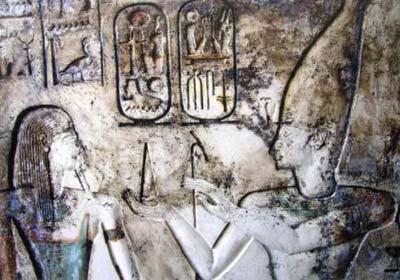Source: Xinhua
04-23-2009 11:09
Special Report: Tech MaxBEIJING, April 22 (Xinhuanet) -- Amid the 3,000-year-old remains of an ancient fortified city, Egyptian archaeologists have unearthed four new temples when they were exploring an old military road in the Sinai.
According to authorities Tuesday, one of the discoveries in Qantara, 2 1/2 miles (4 kilometers) east of the Suez Canal, was the largest mud brick temple found in the Sinai with an area of 70 by 80 meters (77 by 87 yards) and fortified with mud walls 3 meters (10 feet) thick.
The discovery is the latest by archaeologists digging up the remains of the city on the military road known as "Way of Horus." Horus is a falcon-headed god, who represented the greatest cosmic powers for ancient Egyptians.
 |
| This undated hand out picture released Tuesday April 21, 2009, by Egypt's Supreme Council of Antiquities shows Pharaonic King Ramses II, right and Geb, god of earth, carved on a wall at one of four recently unear- thed new temples in Qantara amidst the 3,000-year-old remains of an ancient fortified city that could have been used to impress foreign delegations visiting Egypt, antiquities authorities announced Tuesday April 21, 2009.(Xinhua/Reuters Photo) |
